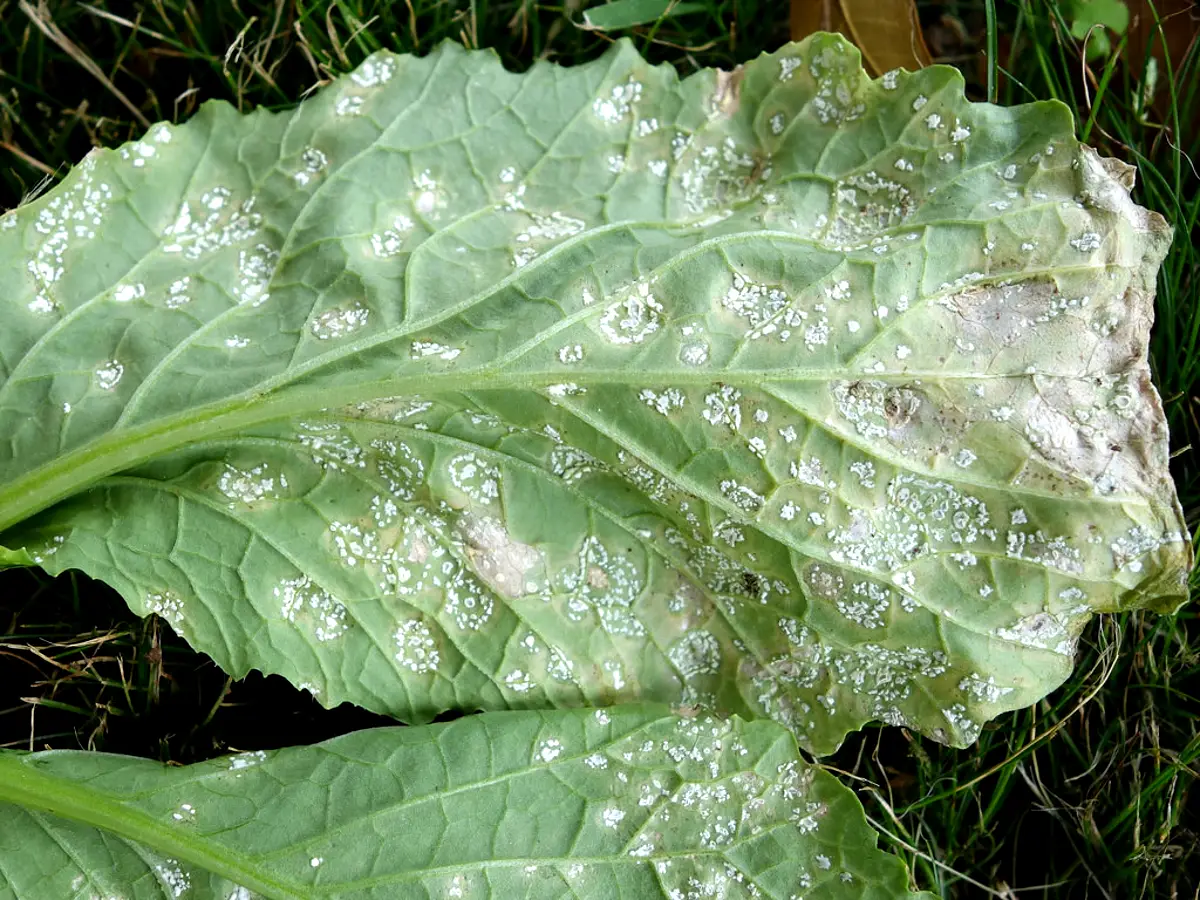Contents
- 1 CLASSIFICATION OF ALBUGO (WHITE RUST)
- 2 STUDY OF HOSTS, DISEASES AND SYMPTOMS OF ALBUGO (WHITE RUST)
- 3 STUDY OF VEGETATIVE STRUCTURE OF ALBUGO (WHITE RUST)
- 4 STUDY OF THE ASEXUAL REPRODUCTIVE STRUCTURES – CONIDIA OF ALBUGO (WHITE RUST)
- 5 STUDY OF SEXUAL REPRODUCTIVE STRUCTURES – OOGONIA AND ANTHERIDIA OF ALBUGO (WHITE RUST)
- 6 IDENTIFICATION OF ALBUGO (WHITE RUST)
CLASSIFICATION OF ALBUGO (WHITE RUST)
Kingdom :- Mycota
Division :- Eumycota
Sub-division :- Mastigomycotina
Class :- Oomycetes
Order :- Peronosporales
Family :- Albuginaceae
Genus :- Albugo
STUDY OF HOSTS, DISEASES AND SYMPTOMS OF ALBUGO (WHITE RUST)
All the twenty five species of Albugo are obligate parasites on flowering plants. The fungus attacks many flowering plants especially the members of Cruciferae.
- A common disease, the white rust of crucifers, is caused by A. candida (=Cystopus candidus) in crucifers.
- The fungus attacks wild as well as the cultivated plants of economic importance, the most important being cabbage (Brassica oleracea var. capitata; vern. patta gobhi), cauliflower (Brassica oleracea var. botrytis; vern. phool gobhi), mustard (Brassica campestris; vern. sarsaun), radish (Raphanus sativus; vern. mooli) and toria (Eruca sativa; vern. tarra) etc.
- The fungus may attack all parts of the plant with the exception of root. The preliminary symptoms of disease appear on the leaves in the form of white shining pustules which later on coalesce to form patches.
- When epidermis is ruptured by the pressure of underlying conidia, white powdery mass is seen on the underside of leaf, in the diseased white patch.
- The leaves in some cases become fleshy and thickened, inrolled and in case of severe infection reduced in size and the entire plant may remain dwarfed. The flowers and stems when infected, show various malformations and enormous hypertrophy (hypertrophy is the abnormal enlargement of the host tissue).
- The membranous petals become very thick and fleshy.
- ipomoeae-pandoranae attacks Ipomoea species (fam. Convolvulanceae) and forms appreciable galls on the stem due to hypertrophy.
- bliti is common on members of Amarantaceae.
- portulacae infects leaves of Portulaca species.
STUDY OF VEGETATIVE STRUCTURE OF ALBUGO (WHITE RUST)
- The mycelium is branched, intercellular, unseptate and produce globular or knob-shaped haustoria.
- Haustoria penetrate the host cells and absorb the food material.
STUDY OF THE ASEXUAL REPRODUCTIVE STRUCTURES – CONIDIA OF ALBUGO (WHITE RUST)
- Asexual reproduction takes place by conidia.
- The mass of intercellular hyphae beneath the host epidermis produces vertical palisade-like groups of conidiophores.
- Each conidiophore bears at its tip a chain of conidia arranged basipetally i.e. the youngest at the base of the chain and oldest at the top.
- In a chain, two conidia are joined with each other by a gelatinous pad called disjunctor.
- Each conidium is multinucleate (5-8 nucleate), hyaline, smooth and spherical.
- The conidiophores constantly cut off conidia forcing underlying epidermis to rupture.
- The conidia are disseminated by wind and germinate either directly (when conditions are unfavourable) by producing a germ tube or may form zoospores (when conditions are favourable).
- The kidney-shaped biflagellate zoospores also germinate to form the new mycelia.
STUDY OF SEXUAL REPRODUCTIVE STRUCTURES – OOGONIA AND ANTHERIDIA OF ALBUGO (WHITE RUST)
- Sexual reproduction is oogamous. The sex organs are generally formed in the stem towards the end of the growing season of the host.
- The oogonium occurs in the intercellular spaces at the tips of mycelium. It is spherical with a central ooplasm and peripheral periplasm. In a A. candida ooplasm is uninucleate. (In A bliti ooplasm is multinucleate).
- The antheridium is paragynous in position and contains several nuclei.
- The antheridia and oogonia are separated from remainder of the mycelium by a septum.
- A mature antheridium develops a slender fertilization tube which grows through the oogonial wall and the periplasm and penetrates deeply into the ooplasm or oosphere.
- A single male nucleus enters and fuses with the nucleus in the oosphere thus effecting fertilization.
- In some species (e.g. A. bliti), the oosphere or ooplasm is multinucleate and these nuclei get fertilised by the entry of equal number of male nuclei. The resulting oospores or zygotes are thus multinucleate.
- The oospore develops a thick, ornamented and three layered wall.
- The nucleus of the oospore divides meiotically. A vesicle is produced in which 40-60 biflagellate zoospores are formed. Zoospore germinates into a new mycelium.
IDENTIFICATION OF ALBUGO (WHITE RUST)
- Kingdom – Mycota
- Chlorophyll absent
- Reserve food glycogen
- Cell wall of fungal cellulose.
- Division – Eumycota
- A definite cell wall present.
- Sub-division:- Mastigomycotina
- Presence of motile spores or zoospores.
- Class:- Oomycetes
- Usually mycelial (aseptate).
- Zoospores biflagellate.
- Order– Peronosporales
- Sexual reproduchon aplanogamic (gametes non-motile) and oogamous.
- Oogonia contain single egg surrounded by periplasm.
- Family – Albuginaceae
- Mycelium intercellular, provided with haustoria.
- Conidia in chains on clavate conidiophores.
- Genus – Albugo
- White shining pustules on leaves,
- Infected parts (stem and flower) exhibit hypertrophy,
- Conidia arranged basipetally on conidiophores.


Leave a Reply